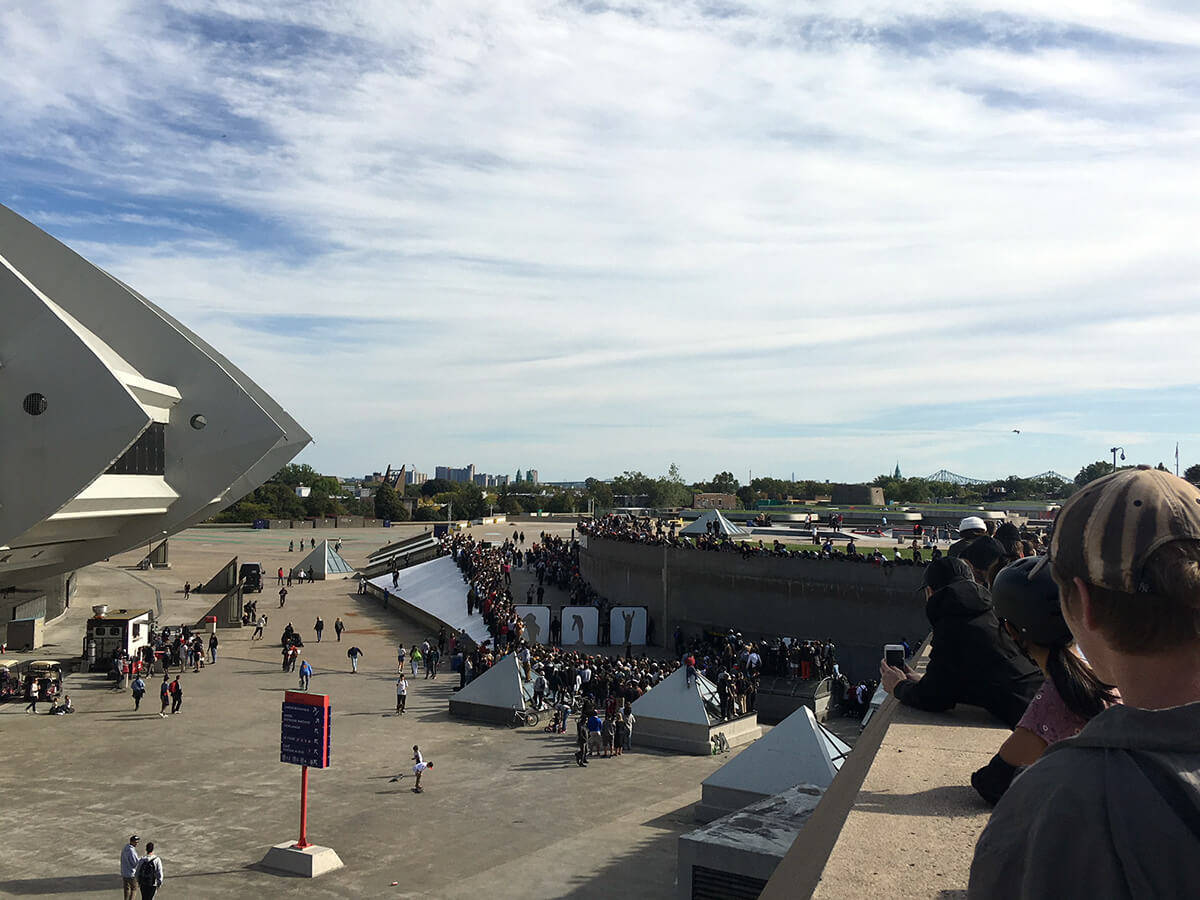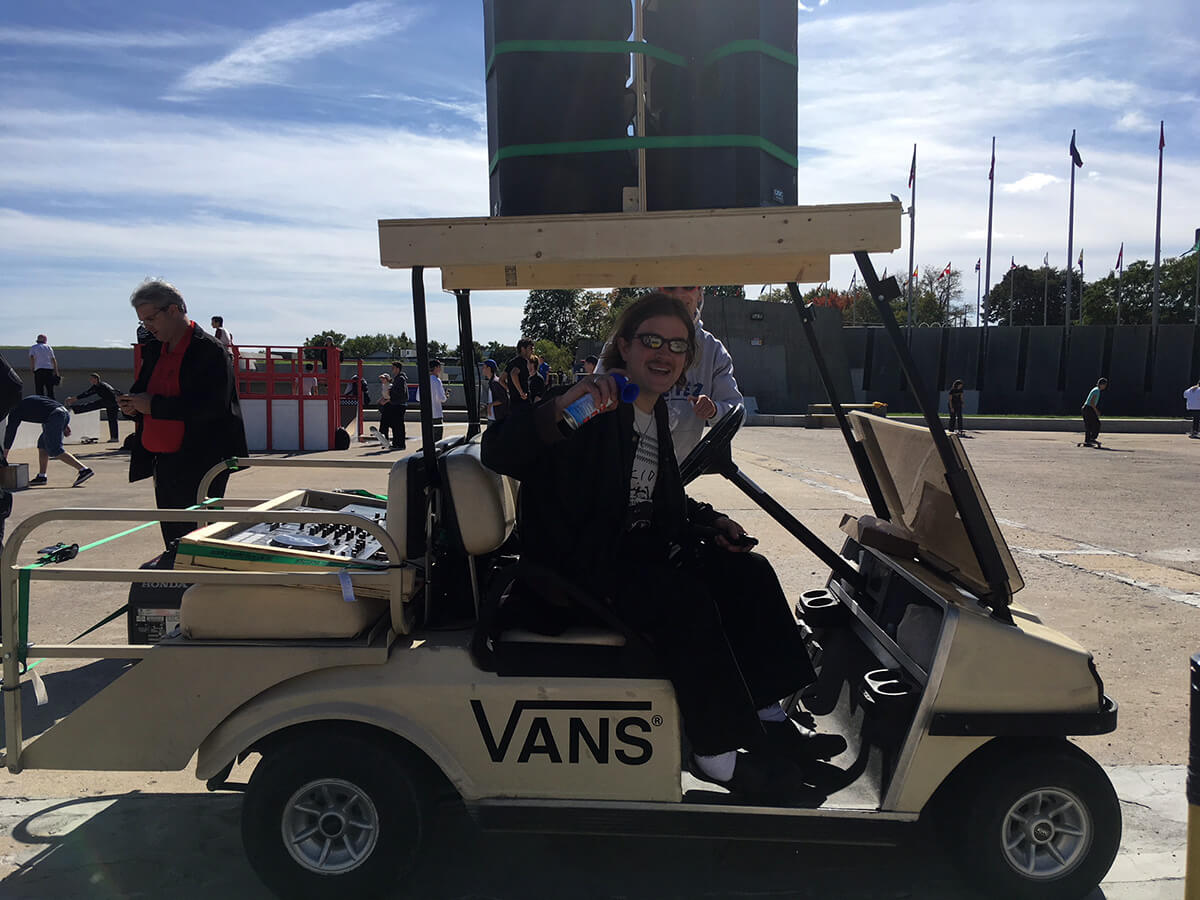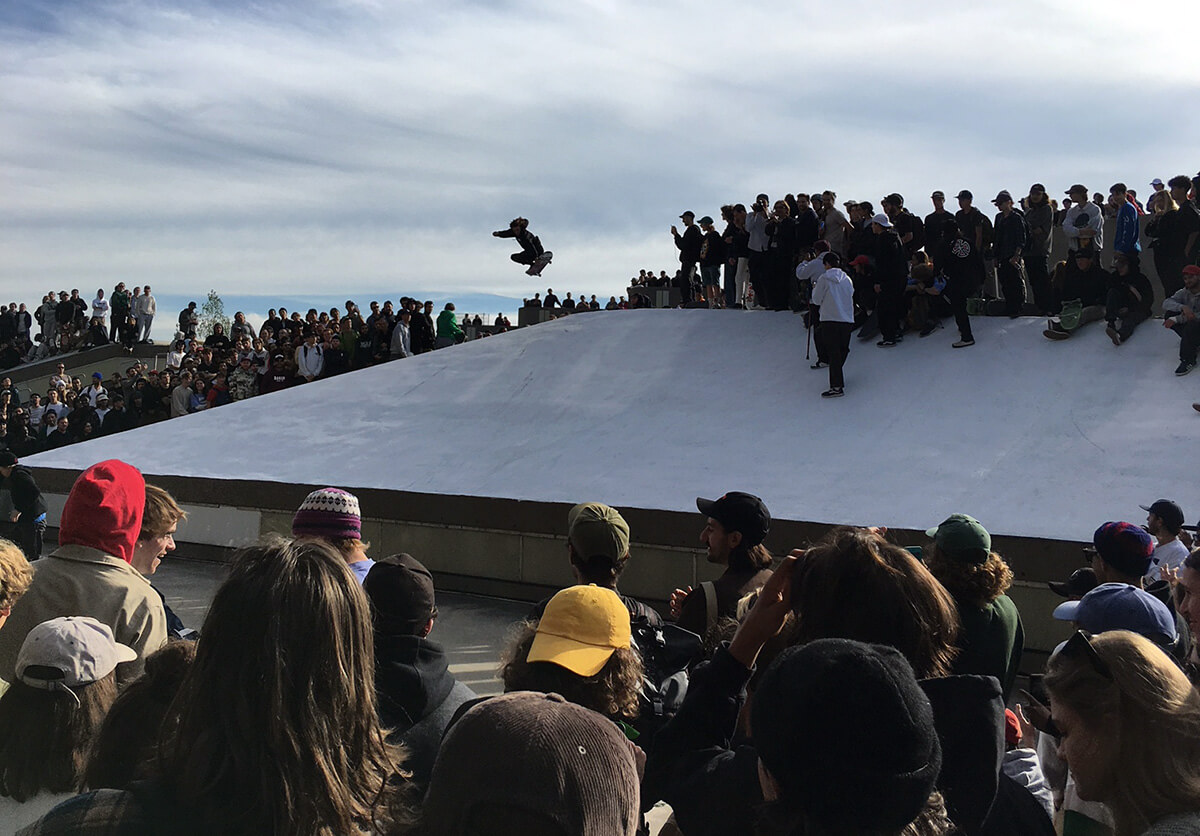The night before Dime’s Live At Stadium event, a skateboarder who you probably follow on Instagram made a facetious observation: “There’s not even any money this time, just glory. What’s the point?”
He was right on one count. Yes, there were no cash prizes being given out, but glory — at least that branded form of Glory™ that is only awarded at the Dime Glory Challenge — was not on the table either. One of Dime’s founders was explicit in his proclamation that this is not the Glory Challenge. The fleeting sense of glory that proceeds all skateboard feats was obviously anyone’s for the taking. Eternal Glory™ requires Joe Valdez to be present, and he was in California.
It is impossible to imagine the pressure of having to follow up skateboarding’s most beloved event for the fifth year in a row. During last year’s Glory Challenge, the collective sweat and body heat of the crowd in the room created a level of humidity that slicked over the floor to a point where they had to pause the event a quarter of the way in. That might be the goal at a rave, but for a contest that involves unicorns and humans on fire, it places tragedy around the corner. I am sure there is an unspoken sense of relief in the back of the Dime guys’ heads that they managed to pull off four Glory Challenges without an injury.
So they took a breather.
Live at Stadium utilizes the already-existing spots at Montreal’s Olympic Park. It is presumably a test for Tokyo 2020, when an army of Bryans will come crashing through while carrying Valdez — and force all skateboard Olympians into the Gladiator Challenge instead of whatever the fuck else is planned.
If you’ve been to Montreal more than a few times, you have no-doubt heard something about its Olympic Stadium besides the fact that it has skate spots. Olympic stadiums are a notoriously awful use of a city’s resources (the 1984 Olympics in Los Angeles are the only games to turn a profit between 1932 and today, and that is because they used a lot of existing facilities), but the stadium Montreal built for the 1976 summer games is one of the worst on record. Projected at $125 million, it cost the city $1.5 billion, and it took them thirty years to pay it off.
Beyond that, the city has struggled to find a use for it since 1976. It has 56,000 seats, yet only hosts a few events a year. Parts of the roof have caved due to heavy snow loads, and the stadium cannot be used if a snowfall over 1.2 inches is anticipated. The stadium is in such disrepair that it was even partially blamed for the Montreal Expos’ move to Washington D.C. Fixing a seldom-used building year-after-year is expensive, but if they tore it down, it would cost a projected half-billion.
Buy an Olympic Stadium, and get showered with attention and visitors for 16 days. Afterwards? Um, who knows. By the way, you owe a couple billion dollars and have to take care of this crumbling thing, too. The pejorative for Montreal’s stadium in the Québécois press is “The Big Owe.”
Fortune described skateboarding as “one bright spot in all of the misery” that came with Montreal’s Olympic Stadium. It referred to a successful 2013 effort to save the Big-O — a natural halfpipe serendipitously built during the stadium’s original construction, and one of the city’s most iconic skate spots. Anybody who has come to Montreal with a skateboard has stopped by the Big-O, and proceeded to kick around the Olympic Park. They have skated its pebbled wallrides over stairs, caught razortail off the ground, maybe rolled into the deceptively gnar bank, and looked at the cement hubba by the stadium’s parking garage, muttering off the few things that they knew had been done.
In fact, skateboarders often find themselves in these under-utilized post-Olympic spaces. Barcelona — whose foray with the Olympics turned out kinda ok — has an Olympic Village loaded with famous skate spots. Colleagues have also said that construction in Russia for the 2018 World Cup (the Olympics’ sibling in buyers remorse-inducing sporting events) blessed cities like Moscow with a plethora of new spots, which resulted in an uptick of skateboard travel there.
We are not here to write about how skateboarding will bring back the billions that cities spend on these white elephants. Heading up to Montreal for the weekend, there was a thought about what there was to write altogether. We have spent the past three falls fawning over how incredible Dime and their signature event is. The challenge of finding a new way to frame it felt forced. The first impulse was to continue the fashion angle from last year. Three pics with the “#fashionatstadium @dimemtl” went up on the QS Instagram story, but #fits were not easy to find.
Then it became obvious: this wasn’t Glory Challenge. The theater was toned down, Jamal Smith’s unicorn was left in its stable, and people’s outfits weren’t even up to par.
Except here we were, over a thousand skateboarders from all over the planet, laughing and smiling together at a piece of Montreal that much of the city viewed as a mistake — where also just six years ago, skaters had convinced them to preserve a few tons of concrete laid in the shadow of a rusty, expensive clunker. (Vans also built a skatepark there this past summer.)
Some local skaters’ parents were even there. They had spent decades reading about the debt, and signing their tax checks to cover pieces of it. At the end of the contest, Alexis Lacroix orchestrated an impromptu skance party. Watching it from afar, you couldn’t help but imagine what the casual observer walking into the otherwise barren Olympic Stadium would think when seeing a dozen adults skancing to Lil’ Bibby. It might not be what the city envisioned when they got in bed with the I.O.C. in the early 1970s, but it was …something.
And maybe that’s the ultimate glory here for the Dime dudes and skateboarding as a whole: a civic glory. This place that the city residents turned their back on and a professional sports team blamed for its leaving Montreal still has worth. What other choice is there? Keep complaining about it?
In 2017, the president of the Olympic Installations Board told The Washington Post, “You and I will be dead and the stadium will still be there.” If that’s the case, then maybe everyone could benefit by looking at ways to use it the way skateboarders have.










Dime glory comp was way more entertaining
whatever happened to forest edwards?
Expert unbiased journalism regarding “whatever happened to forest Edwards?”
https://youtu.be/dIU88Wk0Mq8
yo you should have written about me! I was there dude! Did y’all not see me ???? I was up in there!